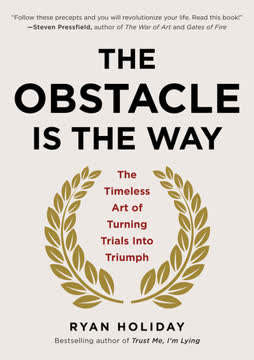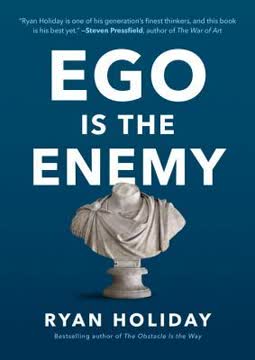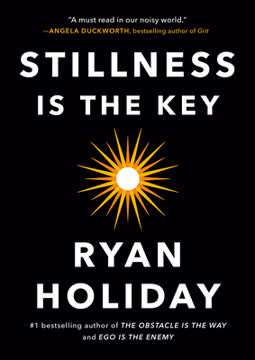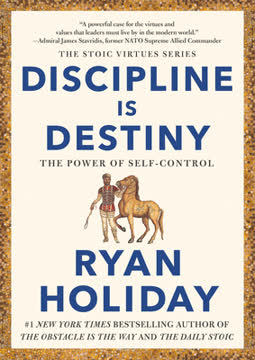重点摘要
1. 将斯多葛主义作为生活的实用哲学
“谁会不恨这样的人呢?”
斯多葛主义作为一种生活方式。 斯多葛主义提供了一种智慧和美德的实用生活方法。它强调关注我们可以控制的事物,主要是我们的思想和行为,同时以平静的心态接受外部事件。这种哲学教导我们,真正的幸福来自于培养美德和智慧,而不是追求外在的快乐或物质财富。
关键的斯多葛实践:
- 定期自我反思和写日记
- 练习感恩和满足
- 预想潜在的逆境以建立韧性
- 培养理性思维和情绪调节
- 专注于道德行为和社会责任
斯多葛主义为个人成长和情感韧性提供了框架,使人们能够更平静和有目的地应对生活的挑战。
2. 通过理性思维培养内心的平静
“宇宙是变化的:生活是观点。”
理性视角。 斯多葛主义教导我们,导致我们痛苦的是我们对事件的判断,而不是事件本身。通过培养理性思维,我们可以获得更大的内心平静和情感稳定。这包括审视我们的信念和假设,区分事实和观点,并采用更客观的视角看待情况。
理性思维的技巧:
- 识别和挑战非理性思维
- 练习认知重构
- 使用“从上方看”的技巧来获得视角
- 专注于你能控制的事物
- 接受变化和无常
通过发展更理性的观点,我们可以减少不必要的痛苦,并在面对生活的起伏时保持平静。
3. 通过认知距离管理情绪
“让我们不安的不是事件,而是我们对它们的判断。”
情绪调节。 认知距离是斯多葛主义管理情绪的关键技巧。它涉及在自己和自己的思想或情绪之间创造心理空间,从而更客观地评估情况。这种练习有助于防止自动的情绪反应,并促进对挑战性情况的更深思熟虑的回应。
认知距离的步骤:
- 认识到思想不是事实
- 不带评判地观察思想和情绪
- 使用创造距离的语言(例如,“我有这样的想法……”而不是“我……”)
- 想象从外部视角看待情况
- 延迟反应以留出时间进行理性评估
通过掌握认知距离,个人可以更好地控制情绪反应,并在面对逆境时保持平静。
4. 通过自律克服不健康的欲望
“生气不是男子汉的表现,相反,温和和温柔的性情更具男子汉气概,因为它更人性化。”
掌控欲望。 斯多葛主义强调自律在克服不健康的欲望和培养美德行为中的重要性。这涉及认识到真正的满足来自于按照理性和美德生活,而不是沉溺于短暂的快乐或过度的物质追求。
培养自律的策略:
- 练习延迟满足
- 定期进行自愿的不适
- 设定与价值观一致的明确目标
- 通过持续的练习培养健康的习惯
- 反思屈服于不健康欲望的后果
通过掌控我们的欲望,我们可以获得更大的自由和满足,将精力集中在生活中真正重要的事情上。
5. 在痛苦和逆境中培养韧性
“没有什么事情会发生在任何人身上,而他不是由自然适应去承受的。”
建立心理韧性。 斯多葛主义教导我们,逆境是生活中不可避免的一部分,并提供了发展韧性的工具。通过将挑战重新框架为成长的机会,并将痛苦视为人类体验的自然部分,我们可以建立心理韧性,并在困难时期保持平静。
发展韧性的技巧:
- 练习负面可视化
- 专注于你能控制的事物
- 培养成长心态
- 在逆境中寻找意义
- 从过去克服挑战的经验中学习
发展韧性使我们能够以更大的勇气和镇定面对生活的困难,最终实现个人成长和内在力量。
6. 通过同理心和理解掌控愤怒
“我们不应该像在睡觉一样行动和说话。”
愤怒管理。 斯多葛主义通过促进同理心和理解提供了强大的愤怒管理策略。通过认识到人们的行为往往是由无知或误解驱动的,而不是恶意,我们可以以更大的耐心和同情心回应挑衅。
掌控愤怒的方法:
- 练习对触发情况的认知重构
- 通过考虑他人的观点培养同理心
- 使用“暂停”技巧在反应前停顿
- 专注于理性问题解决而不是情绪发泄
- 记住愤怒往往对愤怒的人伤害更大
通过掌控愤怒,我们可以保持更好的关系,做出更明智的决定,并保持内心的平静。
7. 以平静和接受的态度面对死亡
“学会如何死亡就是学会如何不做奴隶。”
接受死亡。 斯多葛主义教导我们,接受我们的死亡是过上充实生活的关键。通过定期冥想死亡并将其视为存在的自然部分,我们可以克服常常使我们瘫痪的恐惧,并更真实和有目的地生活。
面对死亡的练习:
- 定期冥想死亡
- 优先考虑生活中真正重要的事情
- 每天都像是最后一天一样生活
- 对你拥有的时间心存感激
- 反思你想留下的遗产
通过以平静的态度面对死亡,我们可以悖论地增强对生活的欣赏,并专注于真正重要的事情,从而过上更有意义和有目的的生活。
最后更新日期:
FAQ
What's How to Think Like a Roman Emperor about?
- Exploration of Stoicism: The book delves into the life and philosophy of Marcus Aurelius, focusing on how his Stoic beliefs influenced his leadership and character.
- Personal Journey: Donald J. Robertson intertwines his own experiences with Stoicism, demonstrating its relevance to modern life.
- Practical Philosophy: It emphasizes Stoicism as a practical philosophy, offering techniques and exercises for emotional resilience and moral integrity.
Why should I read How to Think Like a Roman Emperor?
- Timeless Wisdom: Gain insights from Marcus Aurelius's reflections, which address contemporary challenges like anxiety and stress.
- Self-Improvement Tools: The book provides practical exercises and methods from Stoic philosophy for personal development.
- Engaging Narrative: Robertson combines historical anecdotes with personal stories, making philosophical concepts accessible and engaging.
What are the key takeaways of How to Think Like a Roman Emperor?
- Emotional Resilience: Learn to manage emotions through Stoic practices for greater emotional stability.
- Virtue as the Highest Good: True fulfillment comes from living virtuously, not from external pleasures or material wealth.
- Perspective on Mortality: Contemplating mortality fosters a deeper appreciation for life and reduces the fear of death.
What are the best quotes from How to Think Like a Roman Emperor and what do they mean?
- "Waste no more time arguing about what a good man should be; just be one.": Encourages action over debate, emphasizing embodying virtue.
- "It’s not things that upset us but our judgments about things.": Highlights the Stoic belief that emotions are shaped by perceptions, not events.
- "Know Thyself.": Calls for self-awareness, underscoring the importance of understanding one's thoughts and motivations.
What is Stoicism, as described in How to Think Like a Roman Emperor?
- Philosophy of Life: Stoicism is a way of life emphasizing rationality, virtue, and emotional resilience.
- Core Virtues: Advocates for wisdom, justice, courage, and moderation to guide ethical behavior.
- Indifference to External Events: Teaches that external circumstances are indifferent; what matters is responding with virtue and reason.
How does Marcus Aurelius exemplify Stoic principles in his life?
- Personal Reflections: Through The Meditations, Marcus reflects on his struggles and Stoic practices to maintain composure and virtue.
- Facing Adversity: Despite challenges like wars and personal losses, he remained committed to Stoic ideals, demonstrating resilience.
- Role Model: Marcus serves as a model for applying Stoicism in leadership, guiding ethical governance and personal conduct.
How does How to Think Like a Roman Emperor connect Stoicism with modern psychotherapy?
- Cognitive-Behavioral Therapy (CBT): The book draws parallels between Stoic techniques and modern CBT practices, addressing emotional distress through rational thinking.
- Therapeutic Exercises: Many Stoic exercises are early forms of psychological techniques used in contemporary therapy.
- Emotional Resilience: Both Stoicism and modern therapy emphasize developing resilience and coping strategies for life's challenges.
What specific methods or exercises does How to Think Like a Roman Emperor recommend for practicing Stoicism?
- Morning and Evening Meditations: Reflect on values and actions daily to cultivate self-awareness.
- Cognitive Distancing: Practice separating emotional responses from external events for a rational perspective.
- Values Clarification: Identify and write down personal values to align daily actions with what is truly important.
How does How to Think Like a Roman Emperor address the concept of fear?
- Premeditation of Adversity: Visualizing potential fears and challenges prepares individuals to face them calmly.
- Cognitive Distancing: Recognize that fear often stems from judgments about potential outcomes.
- Acceptance of Uncertainty: Encourages acceptance of uncertainty, alleviating the burden of fear.
What strategies does Marcus Aurelius use to cope with anger in How to Think Like a Roman Emperor?
- Self-Monitoring: Be aware of early signs of anger, such as physical tension or negative thoughts.
- Cognitive Distancing: Understand that anger arises from judgments about others' actions, not the actions themselves.
- Empathy and Understanding: View others as flawed humans acting out of ignorance, fostering compassion.
What is the significance of the "reserve clause" in How to Think Like a Roman Emperor?
- Acceptance of Uncertainty: Acknowledge that outcomes are not entirely under control, reducing anxiety.
- Focus on Virtue: Prioritize virtuous actions over specific outcomes, emphasizing intention.
- Emotional Detachment: Maintain composure regardless of outcomes, fostering resilience.
How does How to Think Like a Roman Emperor address the theme of death?
- Contemplation of Mortality: Reflect on mortality to live more fully and reduce fear of death.
- Acceptance of Change: Emphasizes that death is a natural part of life and should be accepted.
- Perspective Shift: View death as a return to Nature, alleviating fear and encouraging a balanced view of life and death.
评论
《如何像罗马皇帝一样思考》因其将斯多葛哲学、马可·奥勒留的传记和现代心理学巧妙结合而备受赞誉。读者们欣赏罗伯逊能够使古老智慧与当代生活相关联,指出斯多葛主义与认知行为疗法之间的相似之处。该书因其在情绪管理、培养韧性和修养美德方面的实用建议而受到称赞。许多人认为这本书既有教育意义又富有启发性,提供了关于斯多葛原则及其在日常生活中应用的宝贵见解。一些评论者指出,这本书作为斯多葛主义和马可·奥勒留的入门读物非常有效。
Similar Books



















